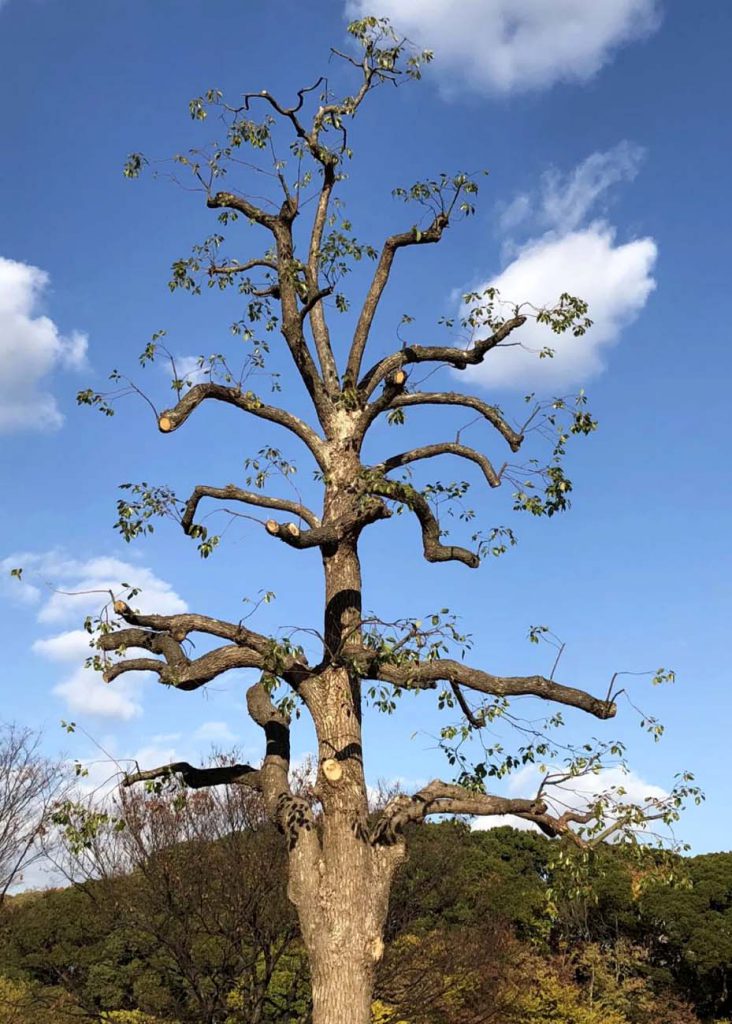
Kusunoki, which is over 10m long in the park, is standing in the blue sky after pruning in the end of the year. In the summer, it has large branches, and when you sit on the bench next to it, the shade is cool and you can smell the unique scent of camphor tree. Kusunoki is known as a camphor tree, and was used as a material for Buddhist statues during the Asuka period. Camphor has various medicinal properties and was a necessity as an insect repellent at home. In Higashimiyoshi-cho, Miyoshi-gun, Tokushima Prefecture, there is a large , which has been designated as a special natural monument. The tree is thousands of years old, has a root circumference of 19m, and has branches of 45m east-west, 40m north-south, and about 25m high. A large Kusunoki is almost always planted in large shrines and temples, and there is a sacred tree wrapped with Gohei (strips of white paper hung from branches at, or before the altar of, a shrine, or used in Shinto rituals). Kusunoki has long been popular as a familiar tall tree.
公園の10mを超える楠が剪定を終えて年の瀬の青空にすっくと立っています。夏には大きく枝を張り、傍のベンチに座ると日影は涼しく、楠独特の香りが匂います。楠は樟脳になる香木として知られ、飛鳥時代には仏像の材に使われました。樟脳はいろいろな薬効成分があり、家庭では防虫剤として必需品でもありました。徳島県三好郡東みよし町には、特別天然記念物に指定された大楠があり、樹齢数千余年、根回り19m、枝張りは東西経45 m、南北経40 m、高さ約25 mもあるそうです。大きな神社やお寺には必ずと言っていいほど、大楠が植えられていて、御幣を巻いた神木があります。楠は身近な高木として昔から親しまれてきた訳ですね。
